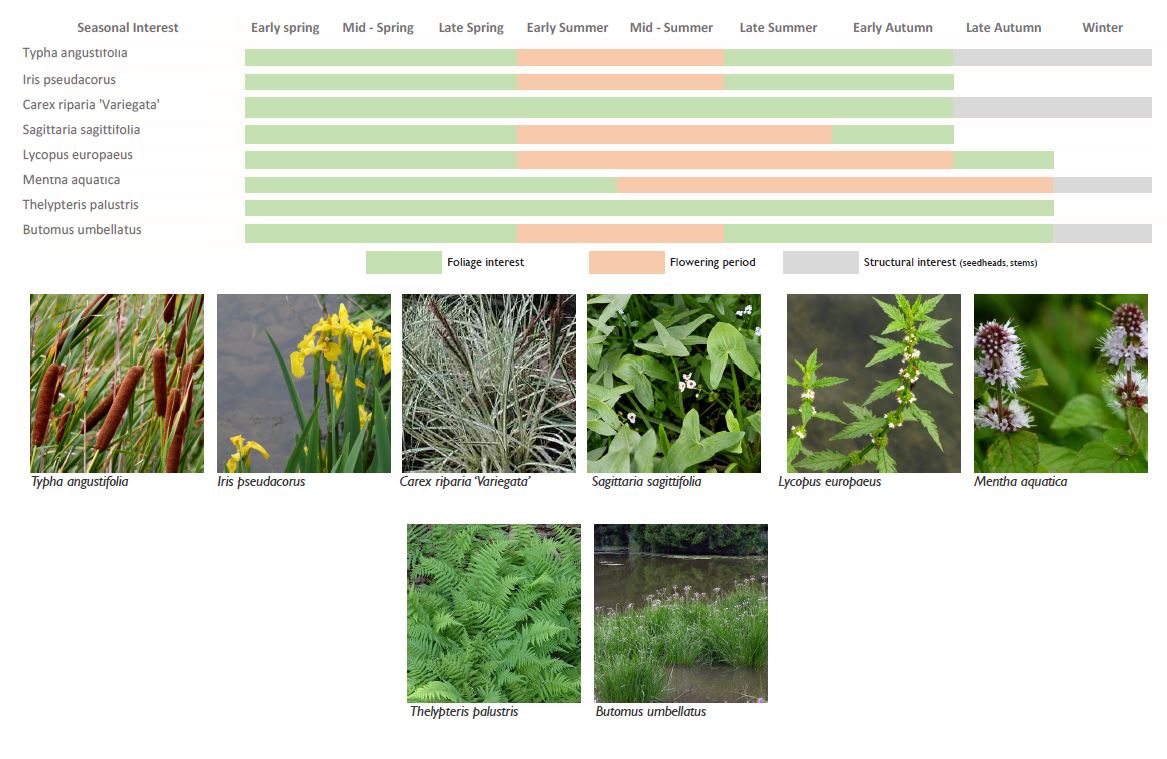Water edges - Field layer species for banks and pond edges
Pond edges are the preferred sites for species of moist and wet soils. The field layer species can either be planted as individuals or in combinations and they offer many opportunities. Here are presented species that can grow in very wet soil and shallow water and that can be used as transitional vegetation between land and water.
1. The first field layer has species that grow densely, reaching heights of 2-2,5 m or more. All the species in this mix are highly invasive and will compete for space, intermingling with each other, but still being restrained from spreading into other plantings by the water depth or by the less wet soil in the neighboring areas. The dense vegetation is great for the biodiversity and offers good places for birds to nest.







Comments
Post a Comment